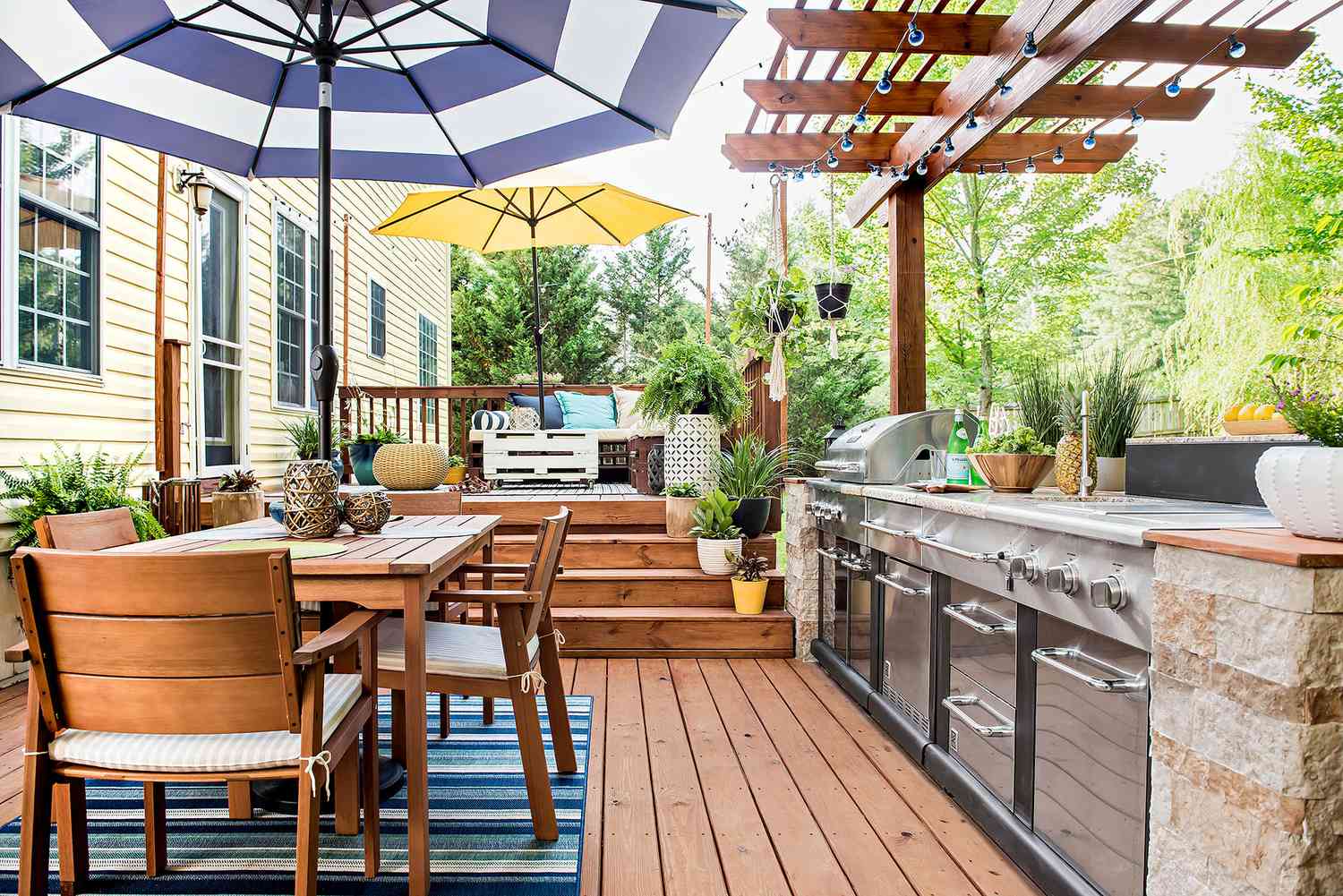Deck staining enhances the all-natural appeal of your backyard while shielding your deck against rain, snow, and warping due to excessive moisture. Here are a few points to consider before purchasing any wood stain for your deck.
Types of Deck Stains
The first step in figuring out the right deck stain is knowing all the kinds of deck stains that are available. The transparency of stains varies from transparent to opaque. The right stain will depend on the amount of wood grain you would like to see and the level of protection you require.
Clear Finish
The last level of protection is provided by clear treatments, which allow the inherent colors of the wood to show through. Although clear finishes are beautiful, you will have to dye your deck more frequently if you choose them.
Semi-Transparent
While providing shielding against the sun and rain, semi-transparent stains bring out the wood’s inherent beauty. However, they still will not last as long as compared to an opaque deck finish. These stains incorporate pigments for enhanced UV protection to help preserve color.
Opaque
Opaque, often known as deck paint, is the ideal deck stain for woodwork that has to be protected from the rain and the sun. Your deck will be protected for a minimum of three years by the stain, which, depending on your choice, may totally cover the wood’s grain.
Varnish
Since varnish does not penetrate the wood and alter its color, it is not technically a stain. Instead, it creates a solid, transparent barrier that keeps the elements out of your deck.
Features of Deck Stains
The second step towards deciding on the best deck stain is understanding all the features the deck stains may provide. To provide better protection or alter their look, stains are frequently combined with various chemicals and pigments.
Colors
The color of your wood stain can hide uneven, knotted wood while coordinating your deck with other outdoor decorations. There are countless colors available, however, on warm days, bare feet will become uncomfortable wearing darker hues.
Materials
Water-based or oil-based stains are both common. Water-based stains assist your deck to maintain its colour while drying quickly, having a mild smell, and drying more quickly. Oil-based pigments have a lengthier drying time but offer superior protection since they enter the wood more deeply.
Gel Stains
Oil-based gel stains will not increase the grain of the wood and are less inclined to drip. They are simpler to apply but may require several coats on your deck because they do not permeate the wood as effectively as other types.
Selecting the Right Color Stain for the Deck
Choosing the proper color is the third step in determining which outside wood stain is best for your deck. Your house already has a main color and at least one, if not more, trim color, and you may want your deck to blend in seamlessly with the overall color scheme and architectural design of your house. Furthermore, although most stains let the wood’s original grain show, they nevertheless come in a variety of colors that can be combined to complement any home’s color scheme. The selection of a deck stain color can be done in a few different ways.
Complement the Main Color of Your Property
The color of the paneling, brick, stucco, or other construction materials that constitute the majority of your home’s exterior is its primary color. A homogenous appearance and, frequently, a contemporary, stylish appearance can be achieved by selecting a stain that complements this shade. Do some research ahead to get an idea of how this decision would look in your home because it might go better with a certain design or color scheme.
Matching the Color of the House’s Trim
The most common approach to choosing a deck stain may be to coordinate the deck with the color of the home’s trim. Using this method, you can be sure that your deck not only complements the color scheme of the house as a whole but also shines out. The architectural features of your home will stand out because of its timeless, cohesive style.
Choose a Different Complementing Color
You might select a hue that is entirely different from the primary and trim colors for your home to achieve the boldest look. To achieve the finest results, choose a hue that complements or blends in with the color scheme of your house. A choice of hue that is too different from the rest of your home’s colors will not look coherent and, at worst, may clash.
Standard Deck Stain Colors
Now that you are familiar with selecting a nice deck stain color, let’s look at a few of the most popular color options on the market right now.
Brown
Shades of brown are arguably the most popular color choice for deck stains ever. These brown hues, which vary from mild tans to intense ebony, are a perfect match for wooden decks. All shades of brown, regardless of tone, add a warm, inviting feel to any house and blend in nicely with their natural surroundings. Lighter browns give off a little more relaxed vibe, while deeper browns typically appear more contemporary and sleek and perform well in metropolitan settings.
Grey
Grey decks in the past were a sign of worn-out, unmaintained wood. However, it is not the case anymore. Today, a grey deck can look stylish and elegant, especially when combined with a black and white interior design scheme. Additionally, a grey deck is a perfect neutral backdrop for whimsical, vividly colored patio accessories and furniture. Grey tones come in a variety of shades as well.
Red
The red colour family is another timeless classic for deck stains. Red-toned decks are a preferred choice for a reason, ranging from paler terracotta tones to darker red-browns like mahogany. A deck that has been tinted red alludes to culture and appears poised to be the centre of attention. These warm tones are pleasant and cheerful, and they go well with many different colour schemes for homes.
Blue
Blue deck stain is very popular, especially in coastal settings. This shade of colour mirrors some of the local waterways and goes well with lakes and oceans. In addition, colonial-style residences frequently choose this option. The tranquillity and serenity that muted grey blues offer to a space makes them a fantastic choice for many home colour schemes.
Natural Transparent
Transparent stains that have been naturally coloured enhance the appearance of your wood deck while providing some durability and protection. If you have high-quality decking, such as cedar, and prefer a more rustic, natural appearance, transparent stains are fantastic.
Conclusion
You enjoy meals and create cherished moments with your family in your outside space. All-year-round friendliness is what you will want. So, in case your wooden deck is deteriorating or crumbling, a fresh coating of stain will go a long way to bringing it back to its pristine shape!



